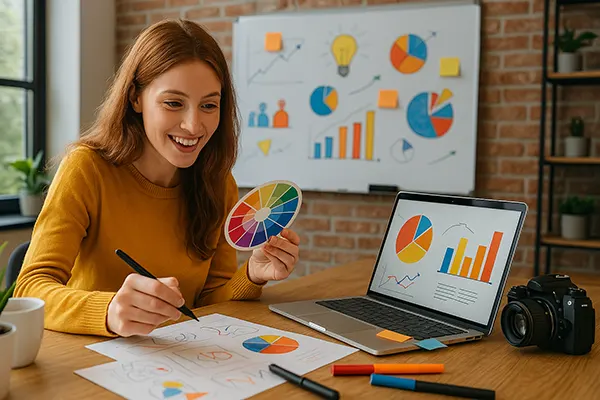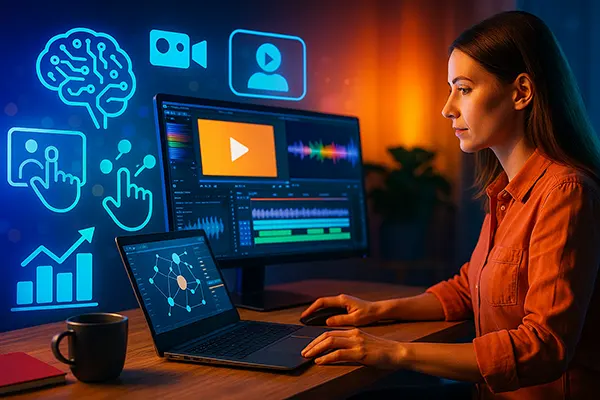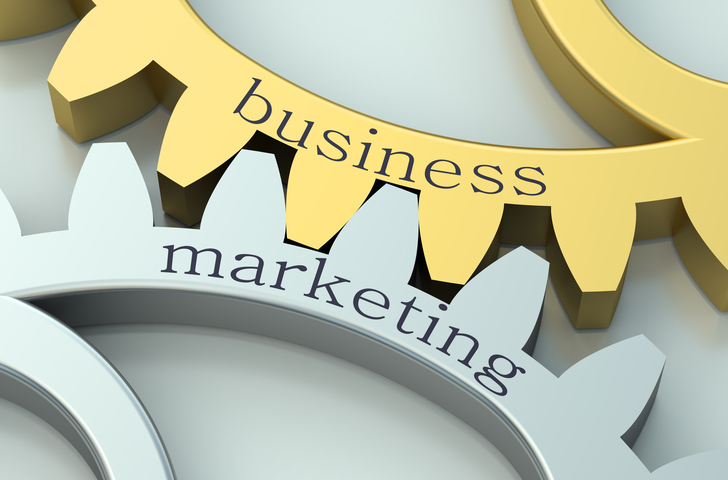
Working as an Artist: How a Creator’s Mindset Fuels Success in Business, Marketing and Life
Being an artist is no longer confined to painting on canvas or sculpting in studios. In 2025, the mindset of a creator is a crucial asset that transcends traditional boundaries. It empowers professionals in business, marketing and beyond to think independently, embrace experimentation, and bring unique value to every endeavour.
The Creative Mindset as a Strategic Business Tool
In a rapidly changing world, businesses require more than standardised processes—they thrive on innovation. Creative thinking equips leaders with the ability to approach challenges from fresh perspectives. When a business adopts a creator’s mindset, it opens doors to reimagining products, services and customer engagement in ways that are bold and unexpected.
This approach isn’t about being eccentric or unstructured. Instead, it relies on skills like lateral thinking, risk tolerance, and the ability to work iteratively. These attributes help companies remain agile in volatile markets, adapt to trends, and design more human-centred experiences. In sectors like fintech, health tech or retail, this kind of thinking often becomes a competitive advantage.
Additionally, creativity fosters resilience. Just like an artist keeps experimenting despite failure, innovative leaders understand the importance of testing ideas and learning from feedback. The business landscape in 2025 increasingly values this kind of mental flexibility, which helps teams overcome disruption and thrive through constant adaptation.
Real-World Examples of Artistic Thinking in Business
Global brands like Apple and Nike frequently draw upon storytelling, visual design, and user experience in ways reminiscent of artistic creation. These companies embed aesthetic sensibilities and emotional narratives into their core offerings, making customers feel connected on a personal level.
Small and medium businesses are also embracing this approach. Independent entrepreneurs on platforms like Etsy and Kickstarter often lead with their creative identities, using them as a business differentiator. Their artistic mindset translates into authentic branding and direct customer engagement—traits increasingly sought by modern consumers.
Even in corporate environments, professionals with backgrounds in music, design or writing are influencing product development, marketing campaigns and strategic planning. The diversity of thought they bring often leads to innovative collaborations and richer business outcomes.
Marketing Through the Lens of a Creator
Modern marketing is no longer about selling—it’s about connecting. The artistic mindset fuels storytelling, which is at the heart of effective campaigns. In 2025, successful brands communicate with emotional resonance, which requires an intuitive understanding of human behaviour—something creators excel at.
Marketers who think like artists aren’t afraid to challenge clichés. They experiment with tone, format, and platform to craft messages that feel authentic and relatable. Whether it’s through Instagram Reels, TikTok storytelling or long-form email content, creative professionals know how to turn ordinary promotions into cultural moments.
This approach also empowers marketers to build communities, not just audiences. By creating content that reflects values, shared experiences and emotions, brands can foster genuine loyalty. This shift from transactional messaging to narrative-driven engagement is key in a time when consumer trust is hard to earn and even harder to keep.
Creative Tools and Strategies in Modern Marketing
From Adobe Creative Cloud to Canva, digital tools allow marketing teams to experiment quickly with visuals, copy and layouts. But tools are only as powerful as the mindset behind them. Creators treat every asset as part of a bigger story, ensuring consistency, emotion and originality across all channels.
Beyond design, the creator’s mindset also influences how campaigns are structured. Instead of sticking to annual plans, creative marketers often work in agile sprints, testing ideas in real-time and pivoting based on results. This iterative, experimental style mirrors how artists refine their work through drafts and revisions.
Moreover, platforms like YouTube Shorts and interactive storytelling apps have made it possible to blend creativity with data. Marketers can now analyse audience behaviour and feedback instantly, using those insights to shape more relevant and personalised campaigns.

How Artistic Thinking Shapes Daily Life and Personal Growth
The benefits of thinking like an artist extend far beyond work. In everyday life, creative thinking supports problem-solving, empathy and emotional expression. It helps people manage uncertainty, navigate complex emotions, and see beauty in the mundane—skills increasingly vital in a post-pandemic world.
For individuals facing career changes, creative thinking opens up unconventional paths. Rather than feeling stuck in outdated job models, they explore hybrid roles, side projects, or digital entrepreneurship. This mindset nurtures curiosity, which fuels lifelong learning and deeper personal fulfilment.
Moreover, living with a creator’s perspective encourages self-reflection and mindfulness. Artists often document their thoughts, track inspiration, or engage in daily creative rituals. These habits strengthen mental health, support focus, and promote a more intentional way of living—something especially important amid the constant noise of digital life.
Incorporating Artistic Habits into Everyday Life
Journaling, sketching, or even simply observing your environment with greater awareness are small steps toward cultivating artistic habits. These actions promote introspection and mindfulness, creating space to process emotions and spark new ideas.
Learning creative disciplines like photography, music or dance doesn’t require professional ambitions. Even at an amateur level, these practices build emotional intelligence and boost confidence. They train you to be present, curious and patient—traits valuable in both personal relationships and professional settings.
Finally, building a creative community can further enrich your lifestyle. Whether it’s joining local art groups, attending writing workshops or participating in online challenges, surrounding yourself with other creators can spark new collaborations, perspectives and friendships.



